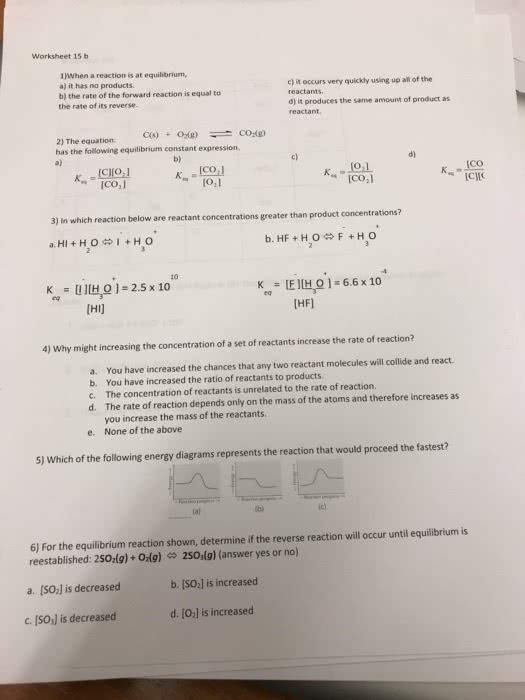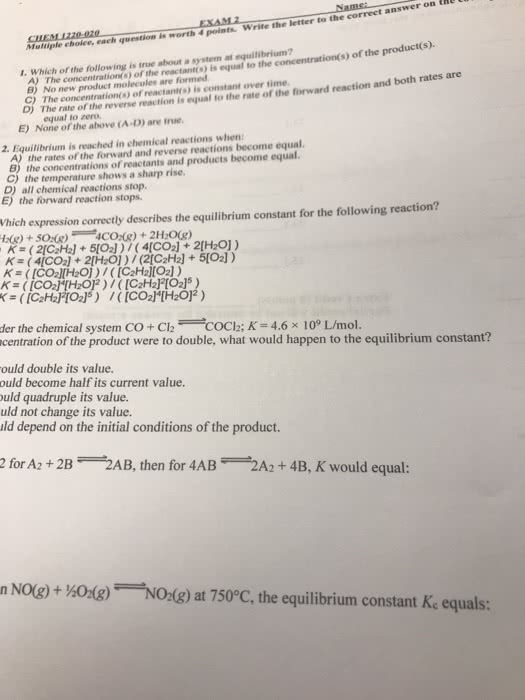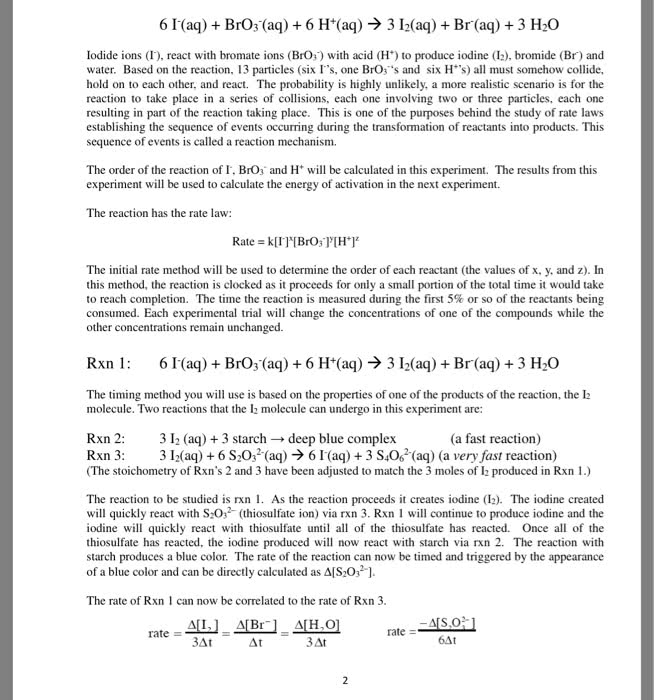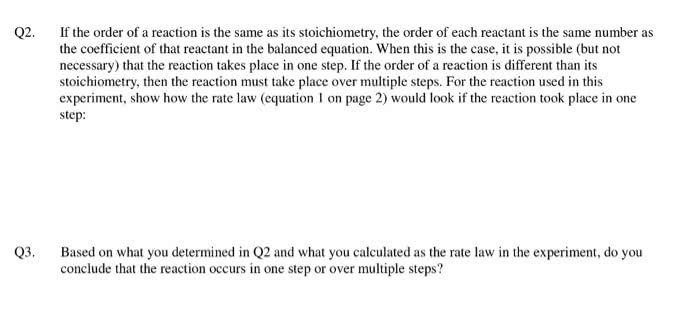CHEM 122 Chapter : 15.2 Rate Laws An Introduction.docx
44 views1 pages
13 Dec 2012
School
Department
Course
Professor
Document Summary
Chemical reactions are reversible: after a period of time, enough products accumulate so that the reverse reaction becomes significant. 2no2 -> 2no + o2 => o2 + 2no -> 2no2. Rate law: an expression that shows how the rate depends on the concentration of (significant) reactants. N: order of the reactant, must be determined by experiment. The [products] don"t appear in the rate law (because the reaction rate is being studied under conditions where the reverse reaction doesn"t contribute significantly to the overall rate. The value of the exponent n must be determined by experiment not from the balanced equation. 2no2 molecules are consumed for every o2 molecule produced. Rate = 2 x rate" ; k[no2]n = 2k"[no2]n ; k = k". Value of the rate constant depends on how the rate is defined. Differential rate law: expresses how the rate depends on concentration. Integrated rate law: expresses how the concentration depends on time.
Get access
Grade+20% off
$8 USD/m$10 USD/m
Billed $96 USD annually

Homework Help
Study Guides
Textbook Solutions
Class Notes
Textbook Notes
Booster Class
40 Verified Answers
Class+
$8 USD/m
Billed $96 USD annually

Homework Help
Study Guides
Textbook Solutions
Class Notes
Textbook Notes
Booster Class
30 Verified Answers
Related textbook solutions
Chemistry: Structure and Properties
2 Edition,
Tro
ISBN: 9780134293936
Basic Chemistry
5 Edition,
Timberlake
ISBN: 9780134138046
Principles of Chemistry Molecular Approach
4th Edition,
Tro
ISBN: 9780134112831
Chemistry: Structure and Properties
2nd Edition,
Tro
ISBN: 9780134293936
Principles of Chemistry Molecular Approach
3rd Edition, 2014
Tro
ISBN: 9780321971944
Chemistry: A Molecular Approach
3rd Edition,
Tro
ISBN: 9780321809247
Chemistry: A Molecular Approach
5th Edition,
Tro
ISBN: 9780134874371
Principles of Chemistry: A Molecular Approach
4th Edition,
Tro
ISBN: 9780134895741
Chemistry: The Central Science
14th Edition, 2017
Brown
ISBN: 9780134414232



